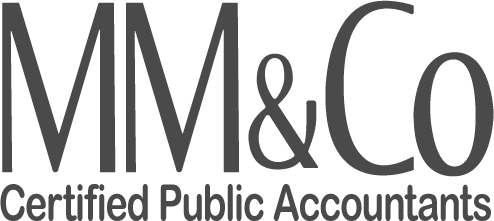I. Here are the accountable forms: Official Receipt (manual so in case there is no electricity or there is a printer problem, the restaurant may still issue), (very minimal cash invoice [manual] for goods as usually restaurants sell used cooking oil, etc.). POS/CRM Official Receipts registered with the BIR that is capable of accommodating long [*names, long addresses, TIN and business style if applicable]. The receipts whether POS/CRM or Manual should be compliant to the requirements of the BIR and capable to accommodate all invoicing requirements* mentioned.
II. Basic Internal Control Points:
Cash
The owner should identify proper staff who shall be closing the restaurant each day and reconciling the night sales. Who is opening and making the morning deposit? Theft can occur when the same manager counts the drawer at night and makes the deposit the next day. Restaurants should reconcile their daily deposit reports and compare these reports to both what is deposited in the bank and reports from the point of sale. They should also perform monthly bank reconciliations timely and without fail, and the person preparing bank reconciliations should not be the individual making deposits in the bank. Finally, restaurants should limit the number of employees with the authority to sign checks. Usually, the owner and his/her partner/treasurer shall be the authorized signatories of the checks. There should be no blank checks left in the drawer/office.
Deposit the collections daily or at least the next banking day if the collection is on weekends or holidays. All discrepancies should be charged to the cashier or the responsible person.
POS/CRM Software Rights
System administrator rights should be limited to an employee independent of the financial statement/accounting cycle, as employees with full system rights could override any segregation of duties in place. Management should also consider an annual review of each individual’s access rights to ensure that their rights continue to fit their job responsibilities.
Accounts Payable& Vendor Maintenance
Employees in the accounts payable function can set up new vendors, enter invoices and produce checks—and by extension, create fictitious vendors and misappropriate cash. Responsibilities should be divided among multiple employees wherever possible to reduce this risk.
When choosing the vendor/supplier of goods, best is to have 3 choices and/or distribute the orders among 2 or 3 of them to manage the prices as having competition between/among suppliers makes the restaurant in control of prices of goods. Do not assign the marketing/purchasing of ingredients PLUS payment to the cook/chef. You can send a separate person or just pay separately via bank transfer or other means. There are several cases when the cook/chef buys at P1,000 but, connives with the vendor to put P2,000 instead in the receipt. Best is for the owner or any trusted personnel to either purchase the goods or accompany the cook/chef.
Always ask for a valid BIR-registered receipt/invoice as all the costs/expenses might be disallowed during BIR investigation/s. Purchasing from fly-by-night vendors may seem to be cheaper, but, in reality, they may not be.
Financial statement review
Many restaurant owners are focused on their income statements and pay little attention to their balance sheets. However, insufficient review of the balance sheet often leads to unexpected adjustments, which can affect the income statement and skew operational performance. To produce accurate financial information to facilitate better decision-making, restaurants should consider:
- Analyzing, reviewing and reconciling all accounts (specifically balance sheets) to the general ledger on a monthly and annual basis. Best is to use accounting software that is reliable and dependable and readily accessible like Xero Accounting.
- Assessing the monthly reporting package, including documenting and signing off on all manual journal entry reviews by both preparers and reviewers.
- Implementing a balance sheet log that assigns responsibility for updates to one employee and reviewing entries to another.
Store monitoring
All bags of cook/chefs, assistants in the kitchen should be placed in lockers. Many times, bags upon entry of staffs are empty but, when they leave, those are full of onions, garlic, and other supplies, and there is no one to check. Sometimes, it becomes awkward to even check a good chef but, this is a big risk that is normally neglected because proper controls were not in place a the start.
Staffs eating left-over food, might not be a good idea as the staffs may tend to not cook good food so there shall be leftovers. Sometimes, they put inside their pockets food for customers; thus, uniforms should normally not have pockets.
Each location [assuming there shall be multiple locations in the future] should be held accountable for operational and financial performance. The general manager, on a regular basis:
- Review payroll prior to processing. Do labor percentages look reasonable?
- Review and approve all store invoices. Is the store overpaying vendors? Is someone assigned to review pricing?
- Review the vendors.
- Review and approve daily sales reports.
- Review inventory for completeness and accuracy. Does the store have a lot of waste? Are food costs too high?
- Ensure compliance with policies and procedures for human resource functions.
- Review the results of store performance for accuracy.
Once the store manager completes the review and approval process, the restaurant should send a financial package to the corporate office for another level of review.
Outsourcing to a 3rd party your accounting, auditing, and tax reporting may turn out to be a wise decision so that employees of the restaurants are always on guard as somebody else is examining their work. Besides, the management of the restaurant may focus on their core competencies and let those experts in that field handle their requirements with just the right professional fees.
Although proper segregation may not always be possible in smaller organizations, and companies cannot completely eliminate incidents of fraud, there are ways for restaurants to meaningfully reduce their risks.
Formal documentation of all policies and procedures, as well as employee training, are simple yet important steps restaurant owners can take to reduce their exposure and protect their businesses.
III. Basic Accounting Control Points:
Basic accounting can already be done using cloud-based accounting software such as Xero. As mentioned above, outsourcing to a firm the bookkeeping, accounting, audit and tax reporting may be a good solution so that the owners may concentrate on their core competence in running the business.


